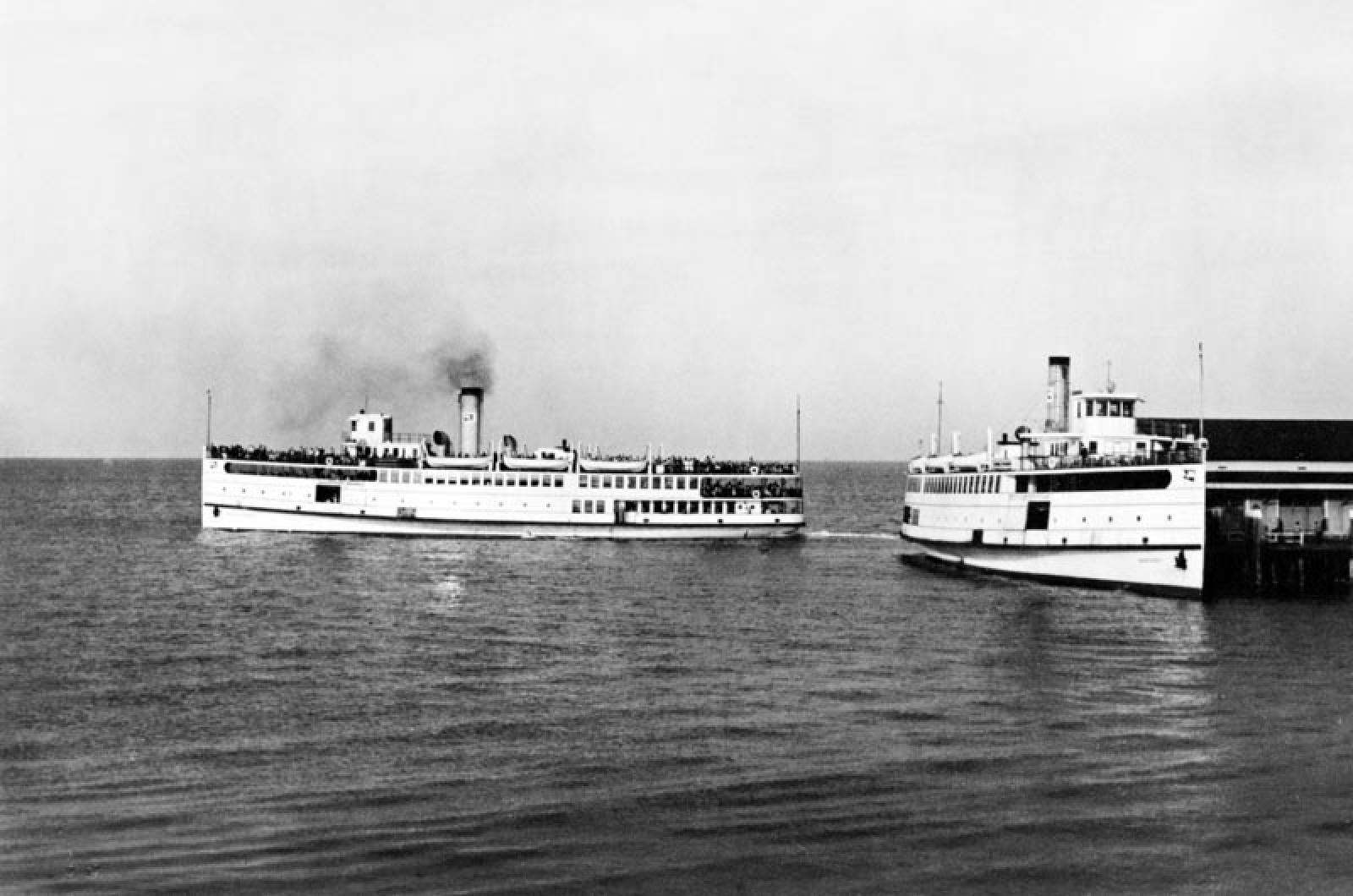From the April 15, 1938 edition of the Vineyard:
At last, it is likely to see a decision by Edgartown voters which will determine the future of the steamboat wharf. And Island history has been pretty much written about wharves.
The particular wharf which is in the news now was not always a steamboat wharf. In other (and in some ways better) days it was the seat of the great oil industry centered at Edgartown under the management of Dr. Daniel Fisher. Here stood his sheds with glass roofs where the oil was refined with the aid of sunlight. And here casks of oil were laded or shipped, some destined for use in government lighthouses, and some to be made into sperm candles.
The heirs of Dr. Fisher sold the wharf property to the steamboat company in December, 1889, the transfer including a number of old buildings and some land running as far as North Water street. Then followed the steamboat era during which the old sidewheelers arrived late and left early, ending and beginning each day with their whistles. The whistles have been silent for several years now, and the town is considering purchase of the wharf to seize what may be the last opportunity to own real access to the water.
The first wharf at what is now Oak Bluffs was completed in July, 1867, at a cost of $5,000. It was later enlarged and modernized in 1929. We do not know just when the present Vineyard Haven wharf was first built; the year must have been later than 1838. Like the former Norris wharf at Eastville, this structure was early in the Island business annals. But the Norris wharf, used in a ship chandlery business and later as a camp meeting landing, long ago disappeared.
The New York wharf is gone, too. It was built in about 1870 by the Vineyard Grove Co., and once boasted a New York Yacht Club station. The Highland wharf followed the Oak Bluffs wharf as a commercial rival, and for many years Island steamers stopped at both structures. Although the former is gone, it has a modern successor.
It would be possible to form a pretty good idea of Vineyard interests and conditions at any time simply from knowing about the wharves of the period. Inasmuch as the saltwater remains as important as ever, although in different ways, this is likely to continue to be true in years to come.
William A. Colby, proprietor of the Martha’s Vineyard Shipbuilding Co. at Vineyard Haven, is building and fitting out an office for the establishment that already has the local residents gasping for breath. “Fitting out” is the proper term to use in describing the furnishing of the office, because outside of a keel, and perhaps some inside ballast, it is the nearest thing to a ship that ever graced the fair shores of the Vineyard. The office has been built in a corner of the old shop, with an entire front of glass overlooking the harbor, the waters of which roll only about three fathoms distant.
Everything in the two rooms which comprise the office is nautical, from the arching carlines overhead, which support the plank ceiling, to the caulked deck, hanging knees and the butt of the mizzen mast that pieces deck and ceiling.
The office, carrying out the scheme of a whaler’s cabin and steerage, which was the boatsteerers’ quarters, is furnished with nautical fixtures, furniture and appointments. But not stopping there, Mr. Colby has raked the four corners of the Earth to secure historic articles. Relics from all of the famous wrecks occurring around the Vineyard find their place in the collection — the Port Hunter, City of Columbus, John Dwight, Sylvia and Fairfax. There are also relics from the White Squadron, made famous by the battle of Manila Bay, from the Santa Maria, flagship of Columbus, the Donna Isabella of the Spanish Armada, the Golden Hind of the redoubtable Sir Francis Drake, and even a few trunnels and the sextant from Noah’s Ark, if all traditions can be believed.
When completed, this office will be christened and figuratively launched with all the pomp and ceremony attending the launching of a naval destroyer, and the dignitaries of town, county and state will be invited to be present.
For charitable reasons, the name of the adventurer is withheld, but Oak Bluffs knows him well. He wanted to catch a trout and started for Chilmark Pond. At the time that he desired to dip a line into the limped waters of that lake, the adventurer was in the village of West Tisbury. He set out on the journey, and a gap, a lapse, a veritable hiatus appears in the story at this juncture.
Late on the same day a wearied, discouraged individual, identified as the adventurer, presented himself to an astonished citizen of Edgartown, and asked the way to Chilmark Pond. After receiving directions and other information, he abandoned his quest and laid a course for home along the shore line where he could not go astray. Just where he journeyed between his departure from West Tisbury and his arrival at the county seat, no one knows, the adventurer least of all.
Compiled by Hilary Wallcox
library@mvgazette.com







Comments (1)
Comments
Comment policy »